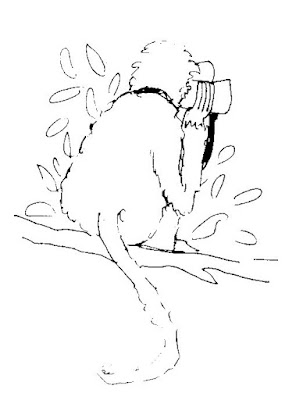If you folks are civilized people when you are behind the steering wheel, then maybe you are more evolved human beings than I am. When I am driving and come across a bunch of pedestrians trying to cross the road, I don't slow down unless the signal is red. I flash my headlights menacingly, honk my horn and speed up. Translated into words, this action means, "Watch out! I'm bigger and clad in a metal armour! So step out of my way... or else!"
When a pedestrian stands in front of my accelerating vehicle, this isn't a friendly warning but a direct threat of physical harm. From where he stands, my car isn't a vehicle of transportation; for him, it is a weapon of death, like a loaded cannon ready to fire.
No, we don't see this as a social injustice because we are all so USED TO IT, dammit! Just as, in the days of feudalistic zamindari and untouchability, neither the overlords nor the downtrodden felt that they were part of an unjust system! They felt it was a normal way for a society to function!
Just this morning, I flashed my headlights, honked my horn and prevented a bunch of schoolgirls from crossing the highway in front of my car. My thinking was: Let them cross behind me because I'm in a tearing hurry.

All citizens are not equal
You remember that famous quote from George Orwell's novella, Animal Farm, where the pigs declare, "All animals are equal, but some of us are more equal than others"?
Like the pigs, we motorists -- especially those of us in cars -- are 'more equal' than others. We have special rights. We have a special right-of-way that the bitch-goddess of economic superiority has bestowed upon us.
Our comfort and speed takes precedence over the comfort and safety of pedestrians, because we can afford to buy expensive vehicles, fuel and vehicle insurance, and pay road tax.
It is no secret that wheels are a status symbol, a social pecking-order based on wealth. In ascending order -- bicycle, scooter, motorbike, small car (Maruti 800), larger car (Fiat Palio, Maruti Esteem), larger foreign car (Honda Civic), SUVs. A Toyota Land Cruiser or Mitsubishi Pajero sits near the top of the heap.
Status-symbols are a natural human tendency. But... Have you noticed that the word 'pedestrian' is tainted with contempt? Also it's hindi equivalent, Raaste pe chalta aadmi ? When did the basic human-being become an object of contempt? We aren't born with wheels, you know! We are all basically pedestrians, but why is it so easy to forget this when we are behind a steering wheel?
Visualize the sheer inequity of this situation: I am ONE GUY securely seat-belted in a well-cushioned airconditioned bubble of metal and glass travelling 90 km per hour. As usual, I am in a tearing hurry. Therefore, my right-or-way takes precedence over that of SIX KIDS carrying a load of books in the noontime sun, balancing precariously on a road divider amidst the confusion of speeding vehicles, noise and smoke, looking for a chance to safely cross the highway and reach school before the starting bell!
Some questions
Who gave me superior right-or-way over these kids? What gave me the right to assign MY time and comfort greater priority than THEIR time, comfort and above all, THEIR SAFETY?
Was it the fact that I could do them physical harm --a sense of raw power -- that gave me the superior right-of-way? Must the weak yield to the strong in our society?
Was it my vehicle's size and bulk -- a ton of machinery hurtling down the road like a charging rhino? Must humans yield to machines in our society?
Was it my greater speed and momentum -- the fact that I was going much faster, and would have to sacrifice my speed in order to let them pass? Must human 'inefficiency' yield to mechanical 'efficiency' in our society?
Was it the fact that I had visible money-power, and therefore my time and comfort was more important than theirs? Must mere humans bow before money-power in our society?
Was it the fact that the road was a motorists' territory -- and therefore a pedestrian must somehow sneak past as best as he can, at his own risk? Must we all gradually give up our rights as 'mere humans' and pedestrians in our own neighbourhoods, as roads become increasingly more common, wider and busier?
To my children, an apology
My children cannot safely walk to school. They cannot ride a bicycle to school. I would not even advise them to walk to and from the nearest suburban railway station, although it is at an easy walking distance which I myself often walk.
They cannot do all these things because the rights of people-on-wheels are rampaging the basic rights of people-on-foot.
Unless my children become people-on-wheels, they are underprivileged citizens in my city. They are not equal citizens. Their basic right to walk is not respected by my government or even by motorists like myself.
For robbing my children of their birthright to walk any distance in safety, I hang my head in shame.
And with tears of anger and regret, I swear to restore to my children their birthright. So Help me God!
-- Krishnaraj Rao
Originally posted on my blog dated 22nd October 2007 at
http://backfoot.rediffiland.com/blogs/2007/10/22/I-am-a-Big-Bully-on.html



















